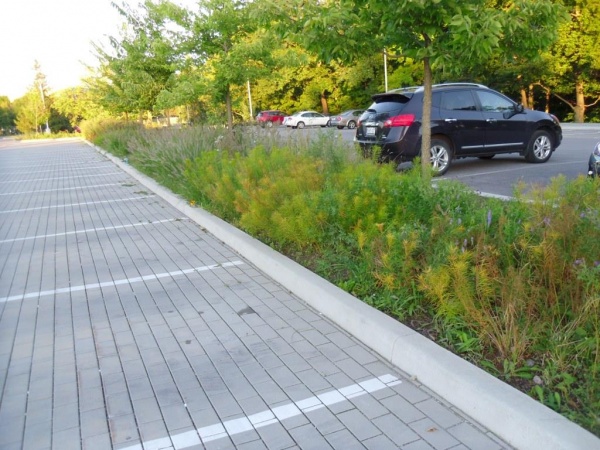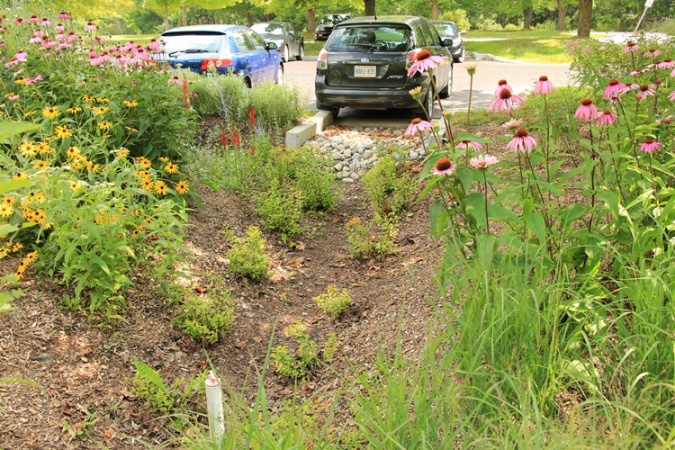Bioretention
This article is about planted installations designed to capture surface runoff through an engineered soil with subterranean infrastructure.
For simpler, residential systems, see Rain gardens.
For linear systems, which convey flow, but are otherwise similar see Bioswales.
Overview[edit]
Bioretention cells are one of the most well recognized form of Low Impact Development. They can encompass all mechanisms of action: infiltration, filtration and evapotranspiration.
Bioretention cells are an ideal technology for:
- Fitting functional vegetation into urban landscapes
- Treating runoff collected from nearby impervious surfaces
The fundamental components of a bioretention cell are:
- Biomedia: An engineered soil mix
- Planting
- Storage layer of coarse aggregate
- Under-drain to redistribute or remove excess water
- Impermeable membrane to prevent infiltration to soils below
<panelSuccess>
</panelSuccess>
Planning Content
<panelSuccess>
</panelSuccess>
Design[edit]
Vegetation
For a detailed list of recommend plant species, see Plants for bioretention
- The vegetation is a big opportunity to maximize the co-benefits of biodiversity and amenity. Planting plans can be formalized or naturalized to suit the surrounding style.
- For resilient and robust planting, native species which can tolerate periods of drought and periodic inundation are recommended.
- Woody and evergreen plants should be avoided in any areas of the bioretention cell to be used as snow storage.
- Dense shrubby plants should be avoided in locations where the accumultion of trash is anticipated as a maintenance problem.
<panelSuccess>
</panelSuccess>
Performance[edit]
Performance Content
<panelSuccess>
</panelSuccess>
Incentives and Credits[edit]
In Ontario
City of Mississauga
The City of Mississauga has a stormwater management credit program which includes RWH as one of their recommended site strategies[1].
LEED BD + C v. 4
SITES v.2
See Also[edit]
External Links[edit]
[edit]
| SEND US YOUR QUESTIONS & FEEDBACK ABOUT THIS PAGE |

